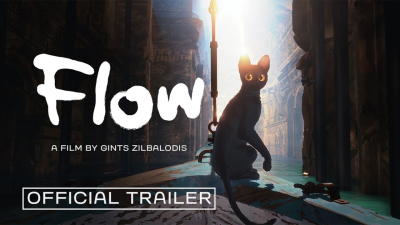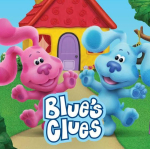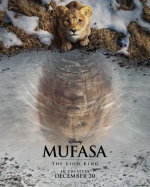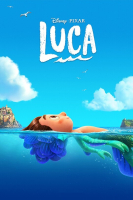Flow
I remember the first time I heard about Flow. Despite an overload of cinematic releases that year, the promise behind Flow captured my imagination with its evocative title and intriguing premise. I found myself captivated by the idea of a film that explores movement—a dynamic interplay of narrative energy and cinematographic finesse. Even before the opening credits rolled, I sensed that Flow was going to be an encounter unlike any other, a journey that promised to stir my emotions and challenge my perceptions of time and space. My heart raced with excitement as I purchased my ticket; I was eager to see how the film would translate abstract ideas of motion, transformation, and the human experience onto the screen.
A Tapestry of Visual Metamorphosis
From the very beginning, Flow enveloped me in a visual tapestry that was both mesmerizing and groundbreaking. The film’s use of color, light, and shadows created a world where every frame was meticulously designed to evoke a unique emotion. I found myself mesmerized by the interplay of warm hues with cooler tones, which expertly reflected the underlying turbulence and calm within the narrative. The seamless blending of realistic visuals with surreal sequences allowed me to traverse between different states of consciousness. As the film shifted its visual tones, I ventured deeper into an environment where art and reality merged, and every scene emerged as a living painting that stirred my inner thoughts.
An Ode to the Fluid Narrative
The storyline of Flow is an intricate dance, weaving together disparate narrative threads into an overall tapestry that is as unpredictable as it is beautiful. Watching the film felt like standing on the banks of a mighty river, each tributary representing a sub-plot that added complexity and depth to the overall experience. I was drawn into a narrative where character arcs unfolded with the gentle persistence of a flowing current. Subtle hints of mystery and layers of introspection kept me riveted, compelling me to rewatch scenes in my mind in order to appreciate infinite details that might otherwise have slipped away unnoticed. The narrative intentionally left gaps, nudging me to fill them with my own reflections and interpretations, making the experience profoundly personal.
The Artistry of Cinematic Composition
One of the aspects of Flow that deeply resonated with me was the extraordinary composition of each shot. The director’s mastery of framing and dynamic transitions elevated the film’s storytelling to an art form in its own right. Every scene was introduced with deliberate care, and the strategic use of close-ups and lingering long shots created an intimacy that allowed the audience to truly connect with the characters. The film effortlessly balanced moments of high visual intensity with more reflective interludes, ensuring that my attention was consistently refocused on the smaller details that carried significant meaning. The innovative use of space and perspective challenged my conventional cinematic experiences, leaving me in awe of the visual literacy that Flow possesses.
Immersive Soundscapes and Musical Architecture
Flow’s auditory experience was just as intricate and compelling as its visuals. The soundtrack served as more than mere background music; it was an essential narrative element that guided the emotional ebb and flow of the film. I was drawn into an expansive soundscape that seamlessly blended ambient melodies with pulse-pounding rhythms, each note carefully engineered to enhance the visual narrative. The music resonated with the natural flow of the scenes, echoing the internal states of the characters. In quieter moments, the soft interplay of instrumental harmonies allowed me to reflect on the subtle narrative cues, while in more intense sequences, the swelling compositions created an almost tangible force that propelled the story forward. The sound design was a masterclass in marrying auditory cues with emotional storytelling.
Daring Directorial Vision
When I sat down to watch Flow, I was immediately aware that I was in the presence of a director with an audacious artistic vision. Throughout the film, the director’s choices in pacing, narrative structure, and visual style underscored an intent to push cinematic boundaries. I appreciated how every decision felt purposeful, pushing the narrative into realms that defied the traditional confines of mainstream storytelling. The film’s pacing, at times deliberate and meditative, allowed for moments of introspection while still conveying a palpable sense of urgency when necessary. I found that the director’s bold decisions paved the way for an innovative viewing experience—one that not only challenged conventional cinematic norms but also invited me to engage in an active dialogue with the unfolding imagery.
Cultivating Emotional Currents
Flow is a film that thrives on its ability to evoke deeply personal emotions through a series of interwoven narrative currents. I felt myself swaying with the rhythm of the characters’ journeys—a collection of experiences that ranged from moments of profound vulnerability to bursts of unstoppable determination. Every emotional beat was carefully crafted to mirror the natural ebb and flow of human feelings. The characters’ struggles and triumphs were mirrored by the film’s rhythmic cadence, which in turn stirred empathy and introspection within me. For me, the emotional currents ran deep, resonating with those intangible moments that highlight the fragility and resilience inherent to our existence. This depth is what transformed a visual experience into an emotional odyssey.
The Poetics of Ambiguity
One of the most intriguing qualities of Flow is its deliberate embrace of ambiguity. Throughout the film, I was compelled to question the boundaries between reality and perception, as abstract symbols and narrative fragments intermingled freely. The film’s intricate layering of meaning meant that no single interpretation could claim ultimate authority over the narrative. This open-endedness invited me to become an active participant, decoding layers of symbolism and reinterpreting key scenes in light of my own experiences. I found this poetics of ambiguity refreshingly honest, as it encouraged a dialogue between the filmmaker’s intent and the audience’s perceptions. The beauty of Flow lies in its ability to foster an environment where every lingering question leads to exhilarating possibilities.
Performance Under the Microscope
The truly extraordinary caliber of Flow is reflected in the performances of its cast. I was captivated by the delicate nuance each actor brought to their character, imbuing them with a profound sense of authenticity. Their performances resonated with the film’s thematic undercurrents, articulating unspoken emotions through subtle glances and carefully measured interactions. I observed how these performances, often understated yet immensely powerful, elevated the narrative to a level of emotional realism that could only be achieved through dedicated craft. Every smile, every moment of silence, and every intense exchange was laden with meaning, inviting me to witness the quiet rebellion of the human spirit against the tides of fate.
Unraveling Layers Through Symbolism
Flow is, in many ways, a study in symbolism. Every recurring motif felt like a carefully chosen metaphor, designed to echo the central themes of transformation and continuity. I couldn’t help but admire how the film’s visual and thematic symbols unraveled layer upon layer of meaning. Icons such as water, reflective surfaces, and shifting weather patterns became signifiers of the larger narrative, encouraging me to reflect on my own interpretations of life’s unpredictable flow. The abstract visual language not only provided aesthetic pleasure but also served as a powerful vehicle for conveying complex emotional truths. I found that each symbolic detail felt like a secret waiting to be unlocked, transforming the viewing experience into a puzzle of multi-dimensional significance.
Innovation in Narrative Structure
Flow pushes the conventional narrative boundaries by embracing a non-linear structure that mirrors a stream of consciousness. I appreciated the film’s refusal to adhere strictly to chronological storytelling, opting instead for a format that allowed for sudden shifts in time and perspective. This innovative structure challenged my preconceptions about what a narrative should look like, inviting me to piece together the story in a mosaic-like sequence of events. While the film’s unconventional approach required an active engagement, it also rewarded viewers with a richer, more complex understanding of the characters and their motivations. The layered narrative not only captured the chaotic beauty of life but also harmonized with the film’s overall thematic emphasis on the organic interweaving of experiences.
Exploring Existential Themes
At its core, Flow presents a meditation on existence and the interplay between fate and free will. I found myself questioning the very nature of control and the elusive character of destiny as portrayed by the film. The narrative invited me to contemplate a series of existential queries—about the paths we choose, the ones that choose us, and the moments when our lives seem to be governed by forces beyond our comprehension. These thematic explorations resonated with me on a deeply personal level, prompting introspection about my own journey through life. The philosophical dimensions of Flow were not presented with overt didacticism; instead, they were woven subtly into the narrative fabric, encouraging an organic resonation with my innermost thoughts.
Structural Rhythm and Pacing
One of the film’s most refreshing qualities was its deliberate and thoughtful pacing. I was impressed by how Flow managed to maintain a rhythm that was both contemplative and invigorating. Every scene seemed to flow into the next with poetic precision, echoing the natural cadence of a meandering river. This rhythmic structure provided me with many moments of calm introspection, only to be followed by bursts of narrative energy that propelled the story forward. The alternating pacing kept me engaged, as it balanced moments of sudden clarity with intervals of quiet reflection. In many ways, the film's pacing mimicked the experience of being caught in a current—at times subtle, at times overwhelmingly forceful, but always true to its own nature.
Architectural Brilliance in Production Design
The production design in Flow is a testament to the ingenuity of its creative team. Every element, from the intricately designed set pieces to the ambient background details, served as a cog in the sprawling narrative machine. I marveled at the fusion of traditional craftsmanship with futuristic aesthetics—a blend that resulted in a set design that was as thought-provoking as it was visually striking. The architecture of the film’s environments helped convey a sense of timelessness and otherworldliness, reinforcing the theme of seamless transition between different planes of existence. I found that every scene was meticulously curated, resulting in a visual narrative where the spaces themselves breathed life into the unfolding drama.
Engagement with Social and Cultural Currents
What truly set Flow apart for me was its nuanced engagement with the social and cultural currents of our time. The film subtly interwove contemporary issues into its narrative without becoming didactic. I appreciated how it addressed topics such as identity, connection, and the search for meaning in a rapidly changing world, all while maintaining an artistic integrity that left room for personal reflection. The cultural motifs served as both mirrors and windows, reflecting the challenges of our era while also offering glimpses into alternative modes of thinking. This delicate balance invited me, as an audience member, to not only witness but also participate in a broader conversation about the ever-evolving human condition.
Dynamic Interplay Between Dialogue and Silence
The screenplay of Flow is a masterpiece of contrast, where dialogue and silence perform an intricate dance. I was particularly struck by how carefully constructed the conversations were. The sparse yet profound exchanges between characters resonated deeply with me, each word chosen with deliberation and each pause charged with unspoken meaning. The film’s embrace of silence, often considered a void, was instead transformed into a powerful narrative device—a moment for reflection, anticipation, and emotional buildup. This dynamic interplay between what was said and what remained unspoken invited me to listen not only with my ears but also with my heart. I found that these moments of silence were as potent as any spoken line, creating rich subtexts that lingered long after the scene had passed.
Embracing the Ethereal Quality of Storytelling
Flow invited me into a realm where storytelling transcends the physical and dips into the ethereal. I was both challenged and comforted by the film’s ability to blend the tangible with the abstract. By integrating dreamlike sequences with stark realism, the movie created an atmosphere where the boundaries between the two dissolved. I felt as if I were drifting in a space that was both familiar and utterly alien—a liminal zone where personal memories, hopes, and fears converged into a single narrative current. This ethereal quality, interspersed with moments of visceral clarity, made my viewing experience profoundly immersive. Every scene was laden with layers that went beyond the surface, urging me to examine the subtleties of life and the complexity of being.
Intertwining Metaphor with Modern Life
One of the aspects of Flow that particularly resonated with my personal sensibilities was its seamless integration of metaphor and modern reality. Every sequence felt like an allegory for the way I perceive the relentless pace of contemporary existence. Elements such as the shifting currents in a bustling cityscape, or the fluid dynamics of personal relationships, were rendered with a poetic flair that made the mundane seem extraordinary. I found myself reflecting on my own experiences, drawing parallels between the film’s imagery and the intricate patterns of my daily life. In this way, Flow not only presented a narrative but also invited me to explore a layered understanding of modernity—one where art imitates life and life, in turn, becomes a canvas for artistic expression.
Interactivity of the Viewer’s Mind
While watching Flow, I was never a passive observer; the film demanded an active engagement of my thoughts and emotions. Each carefully constructed scene was like an invitation to join a mental dialogue—encouraging me to piece together the thematic puzzle presented before my eyes. The abstract narrative style and the open-ended nature of the story compelled me to constantly reinterpret what I had seen, challenging my perceptions and sparking new insights. I found this interplay between the film and my own intellect deeply rewarding, as it transformed the viewing experience into a collaborative exploration of ideas. The film’s structure, characterized by layers of subtle clues and evolving themes, made it clear that every visual detail was placed with the intent to engage, provoke, and ultimately transform the observer’s inner world.
Pros
- Visually striking scenes that captivate the audience
- Innovative storytelling that challenges traditional narrative forms
- Strong performances from the cast that add depth to the characters
- Thought-provoking themes that encourage deep reflection
- Dynamic sound design that enhances the overall cinematic experience
- Clever use of symbolism that opens up multiple layers of interpretation
Cons
- Non-linear narrative may confuse viewers not accustomed to abstract storytelling
- Pacing may feel slow in certain stretches, impacting overall engagement
- Ambiguity in the plot might leave some viewers feeling unsatisfied with unresolved details

























